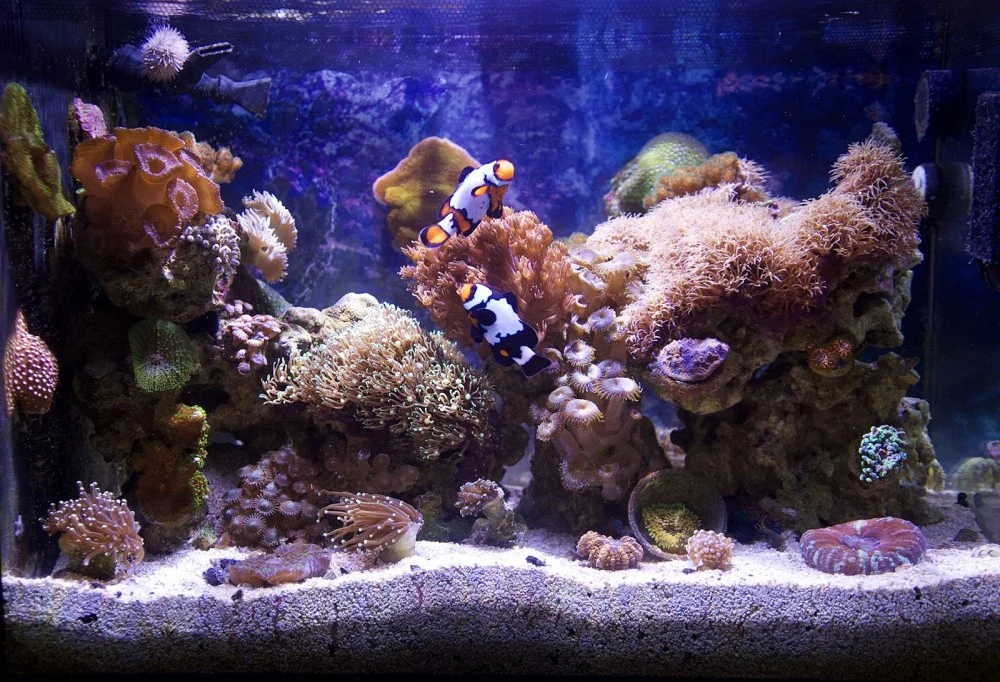Stunning 13-Gallon Reef Tank – ECLS Reefer's TOTM | NanoReef

Tank Specifications
Volume: 13 Gallons / 51 Liters
Dimensions (L × W × H):
22.0" ×
11.5" ×
15.0"
55.9cm ×
29.2cm ×
38.1cm
Equipment List
No equipment information available
Frequently Asked Questions
What is the daily maintenance routine for the tank?
The daily routine involves scraping the glass to remove algae, checking the health of the livestock, and observing the fish and corals. It's also a good idea to monitor water parameters regularly.
How often should I change the filter floss?
Filter floss should be changed every 3-4 days, depending on how dirty it gets. Regular changes help maintain water clarity and quality.
How can I effectively clean the rocks and sand bed?
Every couple of weeks, use a turkey baster to gently blow detritus off the rocks and sand bed. This keeps the tank clean and reduces build-up, ensuring a healthy environment for your reef.
What is the recommended frequency for water changes?
Due to time constraints, water changes occur every 1-2 months, depending on the sand bed's appearance and water chemistry results. Typically, 4-5 gallons, which is about 50%, is removed during a water change.
What do you feed your fish and corals?
I use a mix of refrigerated frozen foods, including Hikari and San Francisco Bay products, LRS Reef Frenzy and Herbivore Frenzy, along with various plankton products and powdered Spirulina. I broadcast feed every other day for the best results.
How do you maintain the nutrient levels in your tank?
Nutrient levels are kept around 0.2-0.25 phosphates and 0-5 nitrates. I dose NoPox to help keep levels steady and occasionally use a small amount of Phosguard to prevent diatom outbreaks and manage nutrient balance.
What is your dosing routine for coral supplements?
I dose Brightwell Reefcode A and B every 12 hours every other day, and Magnesion 3ml once every two days. This helps maintain coral health and overall water chemistry.
Do I need a dosing pump for my small reef tank?
While you can manage without a dosing pump, using one can automate the process and make it more convenient. However, you could easily dose manually based on your tank's needs.
What do you recommend for heating in a nano tank?
Heaters are crucial; I recommend using reliable ones like the Cobalt Neotherm for its slim profile. Be wary of heater failures and consider replacing them every couple of years to avoid issues.
Which return pump do you prefer?
I upgraded from the stock pump to a Sicce Syncra 1.0 return pump, which has been excellent. It has adjustable flow, fits well in the AIO chamber, and is easy to clean.
Is a skimmer necessary for a small reef tank?
A skimmer can be beneficial, but in my experience with a mature tank, it wasn't necessary. Good water circulation from the return pump and wave maker often suffices for nutrient control.
What should I do if my heater fails?
If your heater fails, immediately check the water temperature. Remove the faulty heater and do a partial water change to stabilize conditions. An emergency heater can help restore appropriate temperatures until you can replace the equipment.
How do I prevent algae blooms and manage unwanted algae?
Regular water changes and maintaining a healthy balance of livestock are key. Use clean-up crews effectively, such as astrea turbo snails and emerald crabs, to keep algae in check. Monitor nutrient levels and adjust feeding accordingly.